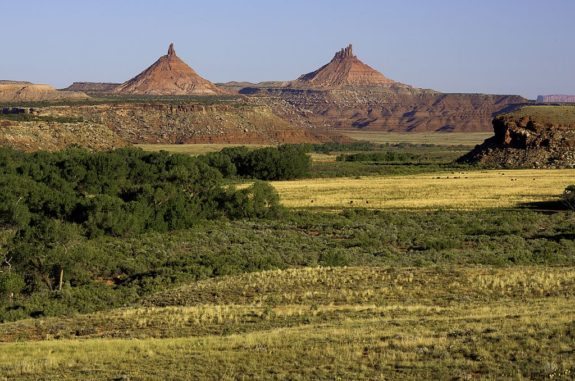
April 14, 2017; New York Times
If public lands, such as national parks, are “America’s Best Idea,” as Wallace Stegner was quoted in Ken Burns’ famous documentary series, then someone might want to remind the U.S. government.
It’s been a year since the Bundy family staged a siege in rural Oregon over public lands, arguing that the government had too much control of land in the West. But discord over much of U.S. public lands is evident, and uncertainty hangs in the air while the Trump administration closes in on the first 100 days in office.
Many feel hopeful with possible regulatory rollbacks, but ever growing is the resistance from conservatives and corporate executives, those who previously would have not been considered in the same group as environmentalists. Their concerns primarily revolve around access to hunting grounds and customers who adore national parks and wildlife.
One such case was in Idaho, where a group of conservative outdoorsmen opposed a plan to transfer thousands of acres of public land to private ownership. Proponents said the plan would generate new property tax revenue and business activity. Opponents feared that the rural county, seeking cash, would encourage the private owners to develop the lands or to put fences up to keep hunters and anglers out. So, this group raised enough money and awareness to kick both a county commissioner and a state senator who supported privatizing the land out of office.
Sign up for our free newsletters
Subscribe to NPQ's newsletters to have our top stories delivered directly to your inbox.
By signing up, you agree to our privacy policy and terms of use, and to receive messages from NPQ and our partners.
In Utah, the outdoor recreation industry made a strikingly bold move. Organizers behind a large outdoors trade show, held in Salt Lake City for 20 years, announced they would move the show’s location in 2019 due to opposition by the state and congressional delegation to the creation of the 1.35 million-acre Bears Ears National Monument, designated in a presidential proclamation by President Obama in his last months in office.
The list of stories goes on, some even being featured in NPQ recently, such as Bears Ears and Red Rock Canyon, where a nonprofit organization has been leading advocacy efforts. In Burns, Oregon, where the Bundy family became famous, nonprofit High Desert Partnership has tried to bring together government agencies and local people over land disputes. Executive Director Brenda Smith says since the Malheur Refuge occupation and the 2016 national election, the dialogue has been rough.
While President Trump has not indicated plans to undo Obama’s entire conservation legacy, the Department of Interior has approved a series of policy changes regarding public lands. These changes are more in line with those who would like the government to take a smaller role in these parks, refuges, and the like. One recent change includes reversing course to allow motorized vehicles in a remote Utah canyon near Bears Ears. Access to Recapture Canyon has long been a point of contention between locals and the federal Bureau of Land Management, which is under the Department of the Interior.
There is no doubt that challenges regarding public lands will continue, and possibly even grow, in the coming years. But the public seems to be more alert to these issues now. That’s as it should be; 600 million acres of public lands belong to them.—Angie Wierzbicki













